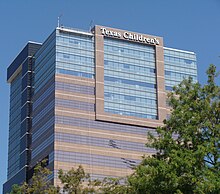NEW HANOVER COUNTY, NC (WECT) - New Hanover County needs some serious help when it comes to how children are cared and provided for, according to the county's Community Child Protection Team, or CCPT.
In an annual report to county commissioners, presented Monday morning, CCPT identified five major issues with child services in the county.
Major problems noted by the team include, among others, a "dramatic decrease" in the quality of mental health services for children as well as the loss of preventative services in New Hanover County when it comes to child abuse and neglect.
The Community Child Protection Team was formed because of a state law established in 1991. The CCPT is mandated to find and address problems with child services in the county.
The team is made up of child advocates, citizens-at-large, and representatives from agencies including the Wilmington Police Department, New Hanover County Sheriff's Office, and the Department of Social Services (DSS). The team, however, is not a division of DSS, but a separate community entity.
Each year, CCPT submits a report to the county commissioners. This year's report will be discussed at a pre-agenda meeting Thursday afternoon and again at the regular board meeting on Monday morning, September 20.
In the report, the CCPT pointed out five problems with New Hanover County's services for children.
First, the team stated the county does not have enough local therapeutic foster homes able to meet the needs of our children. The lack of foster homes is also evident in regard to medically fragile kids.
Second, the members of the CCPT noted a "dramatic decrease" in the quality of mental health services for children. They indicated a steady decrease in quality since 2004 and blame, in part, constant policy changes that result in inaccessible or inadequate services for children.
Next, the team addressed funding, saying New Hanover County doesn't have enough money to assist income-eligible families that may be struggling to stay employed or trying to complete education goals.
According to the report, there were 981 families on a waiting list for assistance in New Hanover County as of August 31, 2010.
Another issue tackled by the CCPT deals with child fatalities. The team stated that too many child deaths are classified as Sudden Infant Death Syndrome (SIDS) by a medical examiner before a thorough investigation is conducted.
The CCPT said it has continually expressed serious concerns about the way child fatalities are handled, and it will continue to push for an autopsy to be performed on every child with a questionable or undetermined death.
Finally, the team expressed that it is "tremendously concerned" with the loss of preventative services in New Hanover County when it comes to child abuse and neglect. The CCPT cited the economic downturn and rising poverty rates as reasons to expect abuse and neglect to get worse in New Hanover County and elsewhere.
"One more burden and it becomes too much," said CCPT Chairperson, Elizabeth Mandel. "It becomes just the catalyst for them to sink. We want to be there to support them. We can't help everybody. We can't do it alone."
The team is asking for more help from the county and especially the state.
"We're asking for your clout," a team member told the commissioners, who wanted firm numbers on what kind of financial help children's programs in the county need.
The team said it will work on getting solid figures for the commissioners, but in the meantime, asked for help in lobbying state lawmakers to stop making cuts to child services and start rebuilding an ailing system.
At the end of the report, the CCPT pointed out that North Carolina ranks 37th of 50 states when it comes to child well-being, according to the new Annie E. Casey Kids Count report. North Carolina also ranks 36th out of 50 in a measure of children living in poverty.
"That's not a number that any of us should be proud of," said Mandel.
LaVaughn Nesmith, the director of New Hanover County's Department of Social Services agreed, and emphasized that something needs to be done quickly, with both poverty and child abuse on the rise.
"The end result is death," said Nesmith. "That is not acceptable. Not in a society that we live in."


 Abbey died at Texas Children’s Hospital. Doctors there later testified that though she did not have any external injuries, she suffered swelling of the brain and retinal hemorrhages — injuries they described as consistent with so-called shaken baby syndrome.
Abbey died at Texas Children’s Hospital. Doctors there later testified that though she did not have any external injuries, she suffered swelling of the brain and retinal hemorrhages — injuries they described as consistent with so-called shaken baby syndrome.

